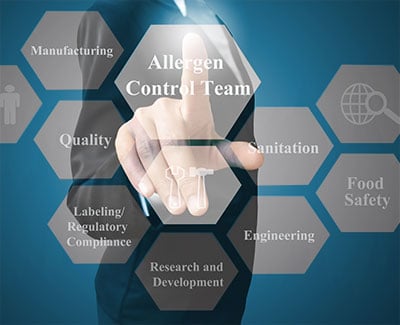

Allergen Management
When manufacturing foods, one aspect that must never be overlooked is the addition, purposeful or not, of allergenic materials into the food. The United States Food and Drug Administration has identified 8 foods which are responsible for 90% of all true allergic reactions. These 8 are milk and milk products, eggs, peanuts, soy, tree nuts, wheat, crustacean shellfish, and fish. It should be noted that on January 1, 2023 the FDA is adding a 9th major allergen to the list, sesame.
People who have a true food allergy are at risk of the body’s immune reaction to the protein in the allergen “over-reacting” and causing severe symptoms including swelling, cramps, hives, and airway/breathing issues. These symptoms can be so severe that they can be fatal if not treated immediately. Persons who have food allergies must strictly avoid the food or foods they are allergic to; this is the only way to prevent the reactions.
As a manufacturer, we are required to control for allergens and label our products appropriately. Allergens that are undeclared on the product label account for nearly half, 48% of all recalls, FDA or manufacture initiated. A recall can be detrimental to a company, but over that, endangering consumers is catastrophic. Even with products that do not contain allergenic material, there is chance for cross-contact with material starting at the manufacturing facilities that produce ingredients all the way through distribution to the consumer.

To combat these sources of contamination to the final product, manufacturers are required to manage each step of the manufacturing process:
Purchased Ingredients: ingredients that will be used to create the final product are evaluated for supplier compliance to allergen protocols.
Ingredient Storage: Facilities that have allergens as inputs in other products must physically keep allergen ingredients separated from non-allergenic ingredients.
Production Lines: If production lines that are used to produce both allergenic and non-allergenic products, a clear sanitation and cleaning schedule is define as well as allergen testing of the line to ensure there are no residual allergens on the line that could contaminate the non-allergenic products. This is also managed at a planning/scheduling stage to plan all production of allergen products after the runs of non-allergen products, NEVER BEFORE unless a full clean and testing is to take place prior to the non-allergen run.
Manufacturing Facility: If allergen products are produced in facilities that also produce non-allergenic, or products with differing allergens, even the non-food contact surfaces must be cleaned to remove possible allergen contamination. Allergen contaminated dust or the spray of a high-pressure wash could cross-contaminate surfaces.
Label Accuracy: Many recalls for allergens are due to mis-labeling of products. Having an effective label verification program is crucial to ensuring labels are correct for the products that are being manufactured.
As with all food safety issues in the food manufacturing industry, staff training and food safety culture are key in producing safe products. Employee awareness of the risks that they pose and control in the cross-contamination of allergens. The importance of handwashing after handling allergens. Allergen awareness must including employee’s food they bring for their consumption on breaks to avoid the risk to the non-allergenic products.
If you’d like to learn more about our allergen control program or have any food safety questions, please ask our quality team. Contact us.




